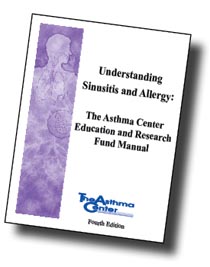Perennial allergic rhinitis
Perennial Allergic Rhinitis (PAR) or persistent allergic rhinitis is a form of nasal allergy triggered by exposure to allergens present in the environment throughout the year. These allergens exists predominantly indoors and include dust mite, animal dander, mold spores and cockroaches.
Symptoms
The classic symptoms of perennial allergic rhinitis are:
- Itching of the nose, ears, throat and palate
- Sneezing
- Nasal congestion
- Post nasal drip
- Runny nose
- Cough
- Watery nasal discharge
- Perennial allergic conjunctivitis
- Sinus pressure
- Ear fullness and popping
- Fatigue
- Respiratory infections
- Asthma
- Atopic dermatitis
These symptoms are similar to those of seasonal allergic rhinitis. However the symptoms of perennial allergic rhinitis may be subtle and you may only have 1 or 2 symptoms, making the diagnosis more difficult. If you have chronic nasal symptoms which are unexplained, you should be evaluated for perennial allergic rhinitis.
Testing
Allergen Skin Test
The allergen skin test is the most sensitive and accurate test for the detection of allergies. There are two common types of skin testing: epicutaneous testing and intradermal testing.
- Epicutaneous testing involves small amounts of allergen being pricked into the superficial layer of skin called the dermis. Allergens which are negative for allergic reactivity by epicutaneous testing require intradermal testing.
- Intradermal testing involves injecting large amounts of allergens into a deeper layer of skin called the dermis.
In both types of testing, allergies are identified through the formation of swelling (wheal) and redness (flare) responses at the site of the prick or injection.
Allergen Blood Tests
RAST (radioallergosorbent test) and ELISA (enzyme-linked immunosorbent assay) testing are blood tests used to detect allergen levels in the blood. These tests are not as sensitive as allergen skin testing and generally only used when skin testing is not available or cannot be performed. Other blood tests such as complete blood counts and total serum IgE levels may also be helpful in suggesting the presence of allergies. However these tests do not identify specific allergies.
Nasal Cytology
Nasal cytology or nasal smear involves the microscopic examination of nasal mucus obtained by blowing your nose into plastic wrap or introducing a cotton tipped swab into the nose. Nasal smears are used to differentiate infectious rhinitis from allergic rhinitis.
Diagnosis
The diagnosis of perennial allergic rhinitis is based on a combination of the following criteria:
- Characteristic clinical symptoms by history
- Perennial pattern of symptoms by history (may fluctuate randomly by intensity throughout the year and may flare up following specific allergen exposures)
- Typical physical examination findings
- Positive skin test and/or blood tests for allergic sensitivity for perennial allergens
- Correlation of occurrence of symptoms with exposure to specific allergens noted to be significant on skin test and/or blood test
- Presence of concomitant allergic disorders
- Positive family history
- Presence of complications of perennial allergic rhinitis



